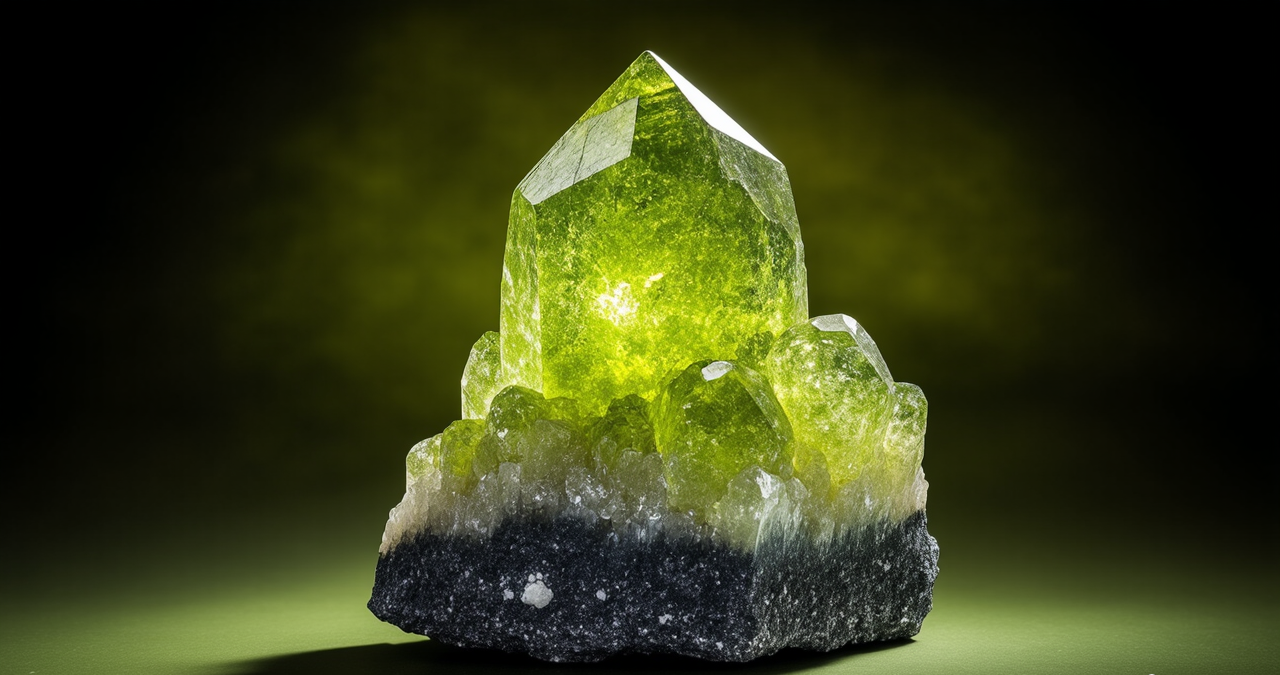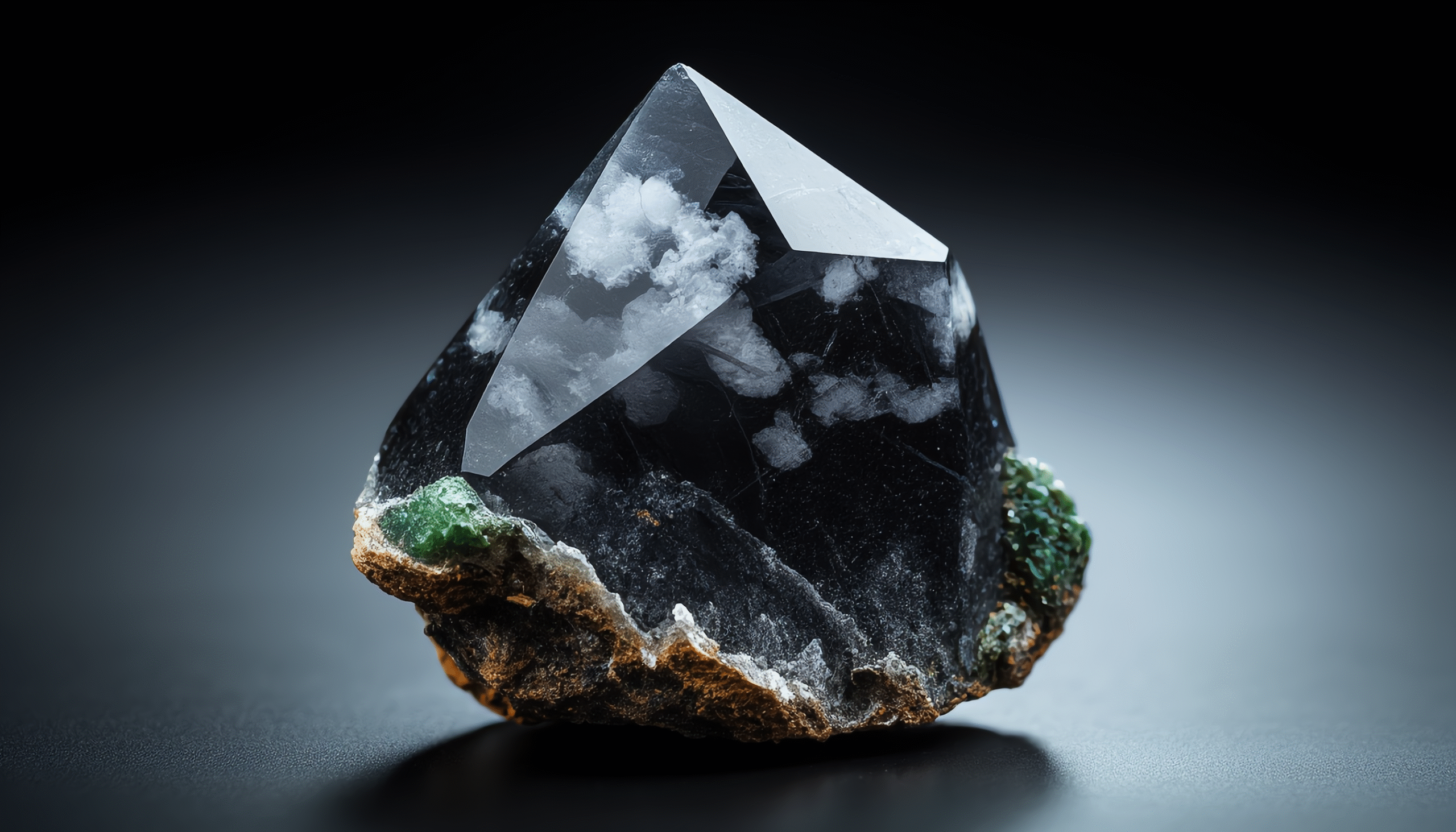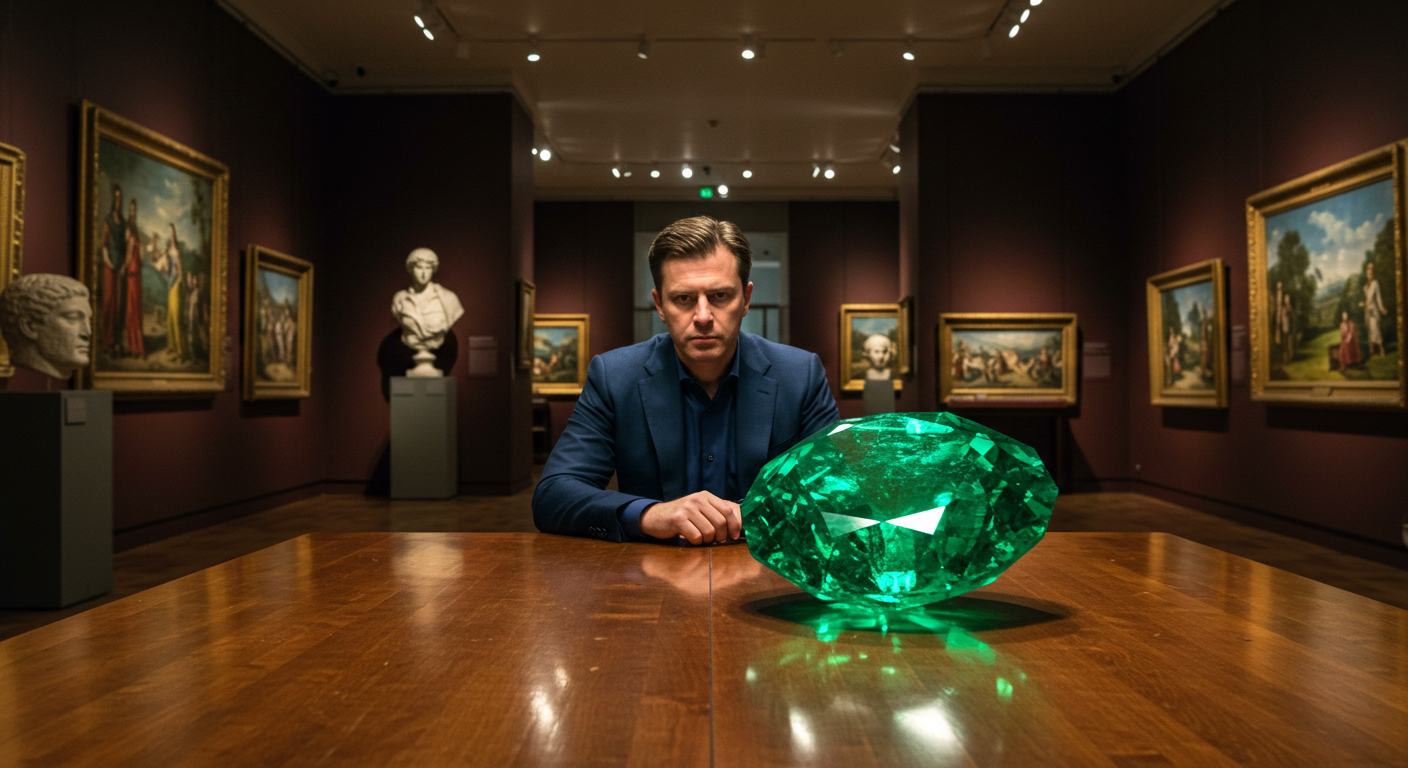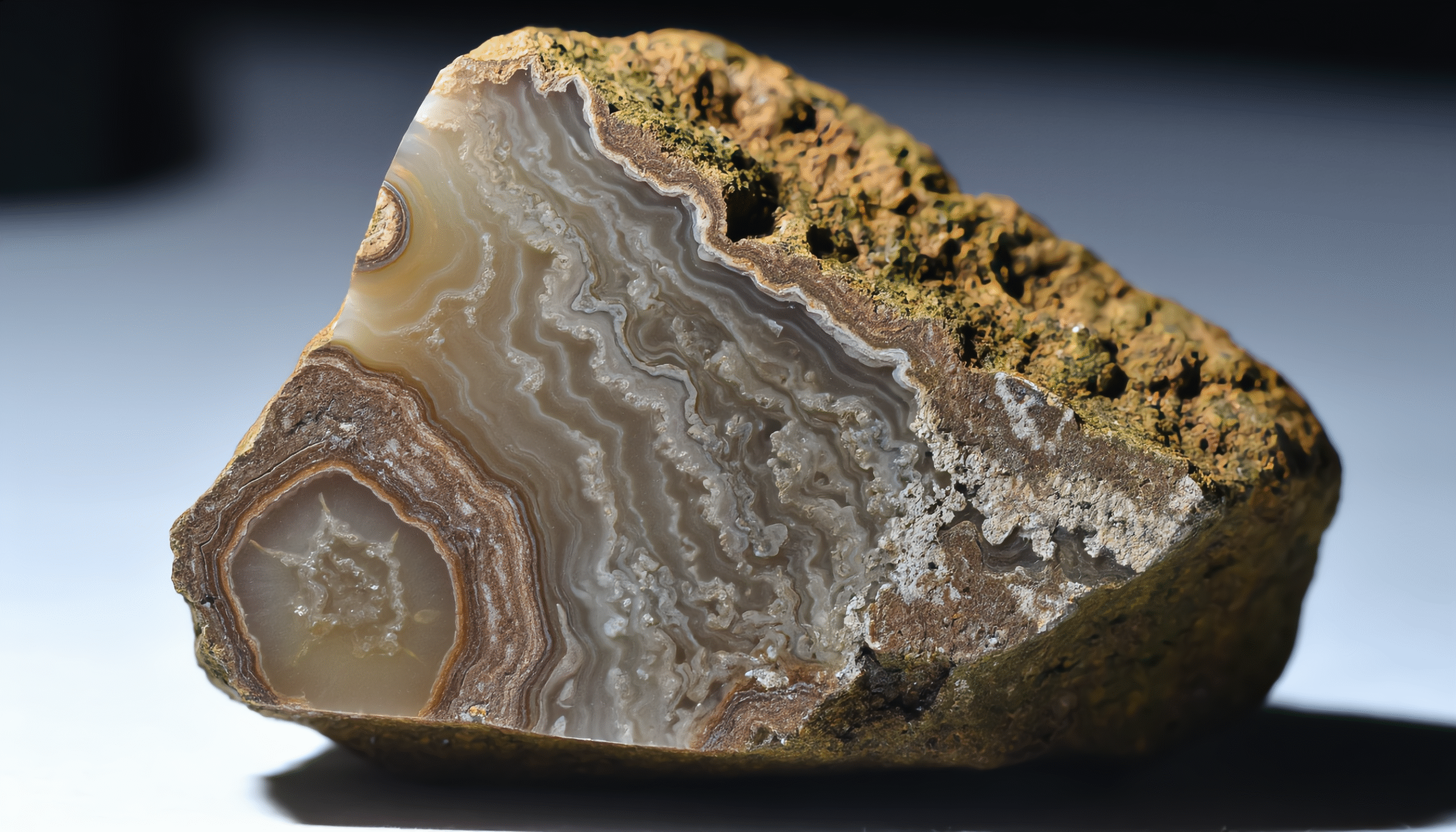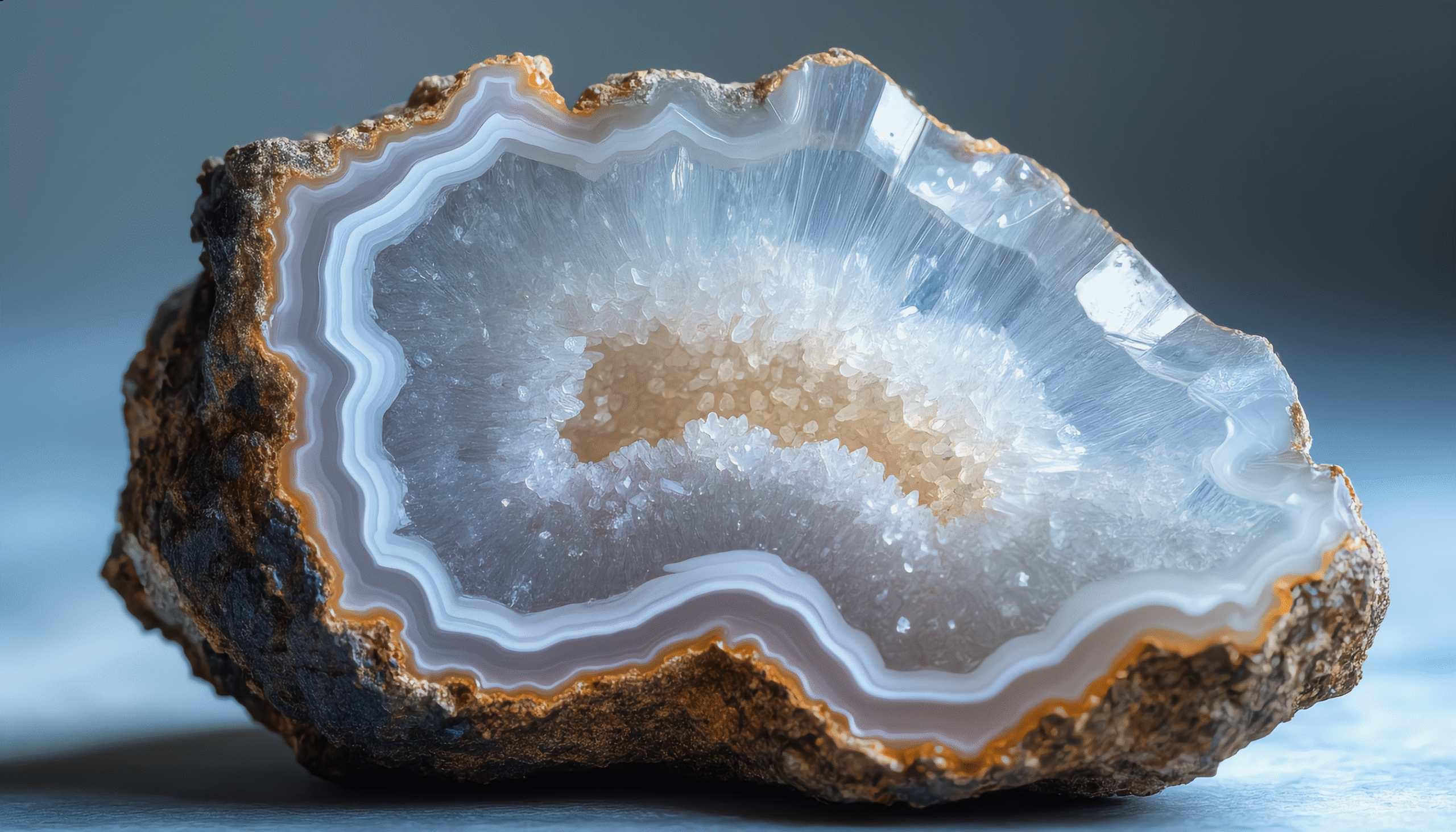See this incredible A Portrait of a Peridot Cluster on its Dark Throne. Explore its intricate patterns and natural beauty.
They beckon us closer, urging us to explore the hidden corners of the world, to witness beauty forged by processes operating on timescales far beyond our own. A well-lit photograph capturing a large, apple-green Peridot crystal cluster resting on a dark, contrasting matrix is one such invitation. It is a striking visual dialogue between vibrant life and deep earth, between geometric perfection and raw material, a testament to the planet’s astonishing capacity for creation, perfectly framed for our admiration.
The eye is immediately seized by the Peridot. Its colour is not just green; it’s a specific, vivid “apple-green.” This hue is the signature of Peridot, a gem variety of the mineral Olivine. Unlike many gems whose colour comes from trace elements, Peridot’s green is intrinsic to its chemical composition – iron within its magnesium silicate structure. This specific shade, luminous and saturated, feels alive, a splash of intense vitality against its somber setting. In this well-lit photograph, the light seems to awaken the green, making it almost glow, emphasizing its richness and depth. It is a colour that speaks of growth, nature, and a terrestrial energy that feels both ancient and fresh.
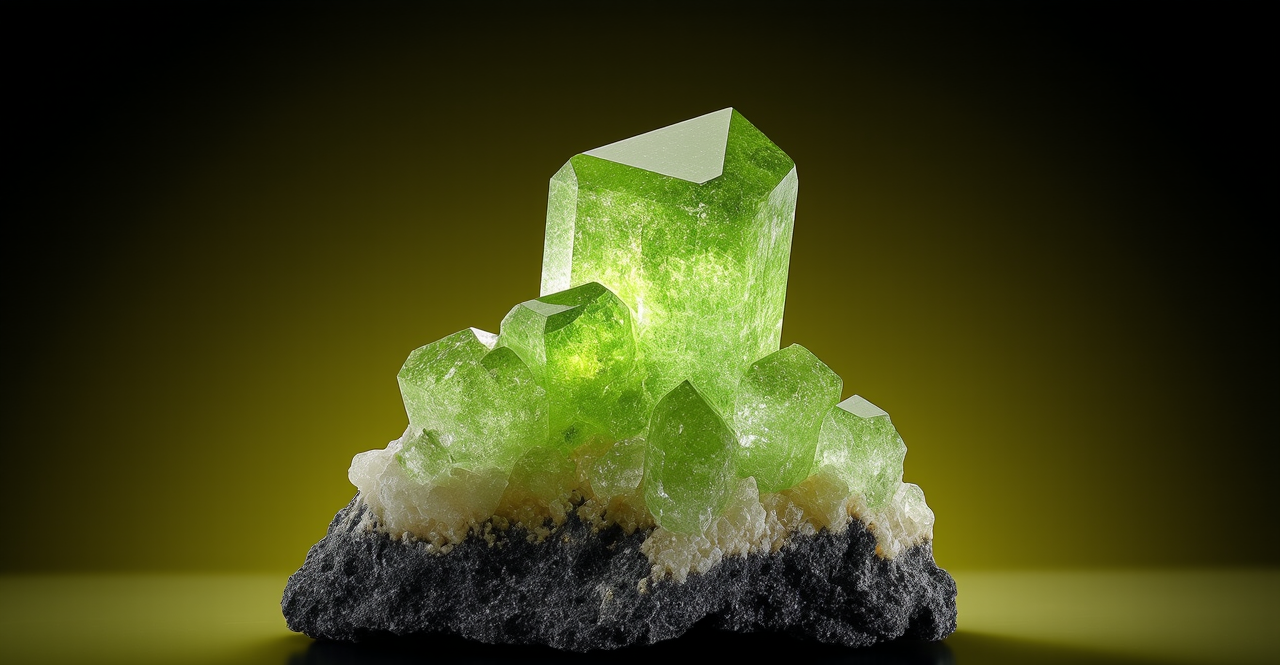
The form of the Peridot crystals within the cluster is equally captivating. The description highlights their “prismatic” shape, characterized by well-defined faces meeting at sharp angles. These are not rounded pebbles but crystals that grew unimpeded enough to develop their characteristic geometric forms. Under the careful lighting of the photograph, these sharp faces become planes of light and shadow, revealing the crystal’s internal structure and adding a sense of depth and three-dimensionality. Light reflects off these faces, creating bright highlights that contrast with the deeper green within the crystal’s mass. This play of light on sculpted surfaces enhances the gem’s inherent sparkle and visual dynamism.
Furthermore, the photograph captures a “naturally terminated top.” This is a significant detail for anyone who appreciates minerals in their natural state. A terminated crystal is one that has grown freely at one end, allowing its inherent crystallographic structure to complete itself in a perfect, often pointed, apex. Seeing a cluster with terminated crystals suggests that they had space to grow, unconstrained within the cavity or vein where they formed. This termination is nature’s seal of completion, a sign of unimpeded growth and a beautiful display of mineral geometry reaching its potential. In a cluster, some terminations might face upwards, others sideways, creating a fascinating miniature cityscape of green spires.
Now, shift focus to the material upon which this vibrant cluster rests: the “dark, contrasting matrix.” The matrix is the original host rock, the geological context from which the Peridot cluster emerged. Its darkness provides the perfect foil for the luminous green of the Peridot. This high contrast is a deliberate and effective photographic choice, making the Peridot leap visually from its setting. The matrix isn’t just dark; it’s described as a “granular material.” This texture is key. It suggests a rock composed of visible grains or crystals, perhaps coarse-grained igneous rock like basalt or gabbro, which are common environments for Olivine/Peridot formation. The granular surface is likely rough and uneven, a stark textural contrast to the smooth, sharp faces of the Peridot crystals. One represents the fine art of crystallography, the other the more chaotic, composite nature of the surrounding rock mass.
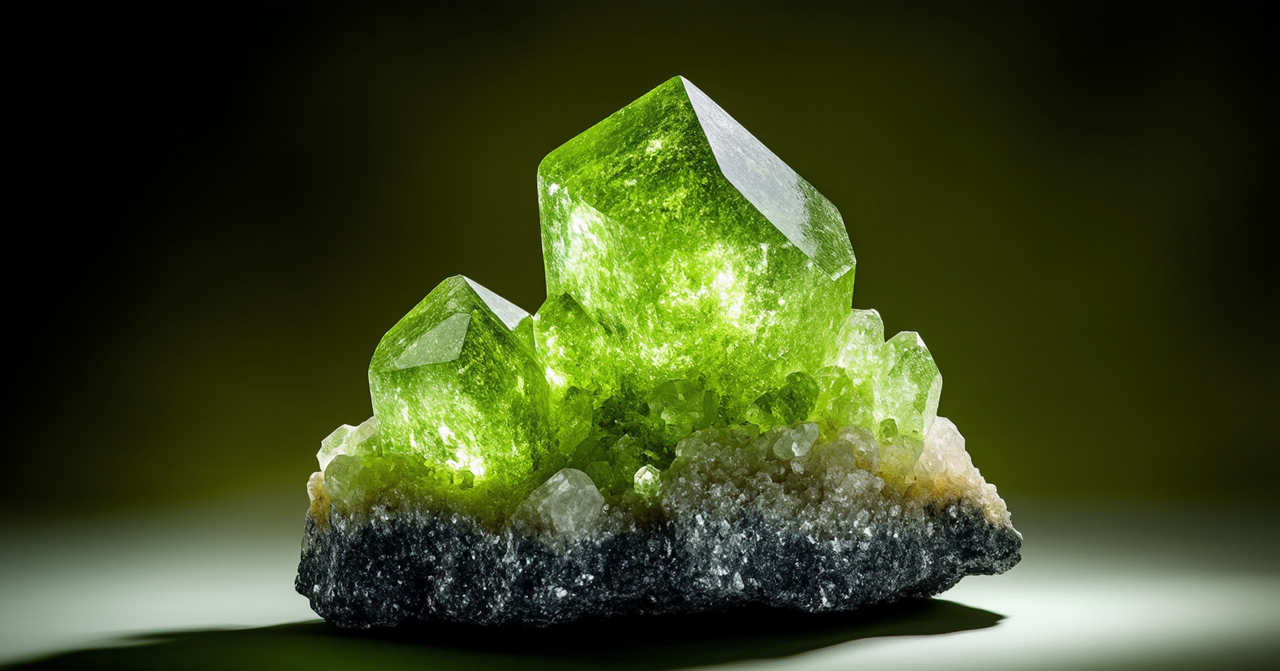
Adding further detail to the matrix are “some small white crystals, probably feldspar.” Feldspar is a very common group of rock-forming minerals, frequently found alongside Olivine in igneous rocks. Their presence reinforces the likely geological origin of the specimen, placing it firmly within the context of volcanic or plutonic activity. These small white crystals provide points of light and visual interest within the dark matrix. While the Peridot crystals are large and commanding, these smaller white crystals offer a different scale of crystalline beauty, tiny geometric forms embedded in the granular texture. They break up the uniform darkness and texture of the matrix, adding complexity and a sense of geological reality to the base.
The composition of the photograph is carefully orchestrated. The “well-lit” quality is essential. Good lighting sculpts the forms, highlights the sharpness of the Peridot faces, reveals the granular texture of the matrix, and, most importantly, brings out the vividness of the green colour. The lighting is likely directional, creating shadows that define the crystal shapes and the contours of the matrix, adding depth and drama.
The background is described as a “soft, dark gradient.” This is a classic technique in mineral photography. The softness of the blur ensures the background is completely non-distracting, dissolving into abstract tone. The darkness of the gradient further isolates the subject, preventing any visual elements from competing with the Peridot cluster and its matrix. It creates a sense of space around the specimen, emphasizing its presence and allowing the viewer to focus solely on its details. The gradient might transition from darker to slightly lighter (or vice versa), adding a subtle visual flow, but its primary role is to push the background into insignificance, making the foreground the undisputed star.
The overall effect, as noted in the prompt, is to “emphasize the vivid green color of the peridot.” Every element of the photograph works towards this goal. The dark, contrasting matrix provides the perfect backdrop for the green to pop. The well-lit conditions make the colour sing. The blurred background removes any competing colours or textures. The focus is sharpest on the Peridot and its matrix, drawing the eye to their interaction. The composition is centered around showcasing this specific specimen’s most captivating feature: its intense, apple-green colour.
Beyond the purely visual, this photograph tells a compelling geological story. Peridot is unique because much of the Peridot found on Earth originates not in the crust, but in the upper mantle – the layer beneath the crust. It is brought to the surface by volcanic activity, often embedded in basaltic lava flows or ejected as xenoliths (pieces of mantle rock incorporated into volcanic rock). Seeing a Peridot cluster on its matrix like this specimen strongly suggests such an origin. The dark, granular matrix, likely a basalt or gabbro, is the vehicle that carried these treasures from incredible depths up to the surface. The small white feldspar crystals further support this igneous connection. We are not just looking at a stone; we are looking at a piece of Earth’s deep interior, thrust upwards by immense forces, its vibrant colour a testament to its formation under high heat and pressure.
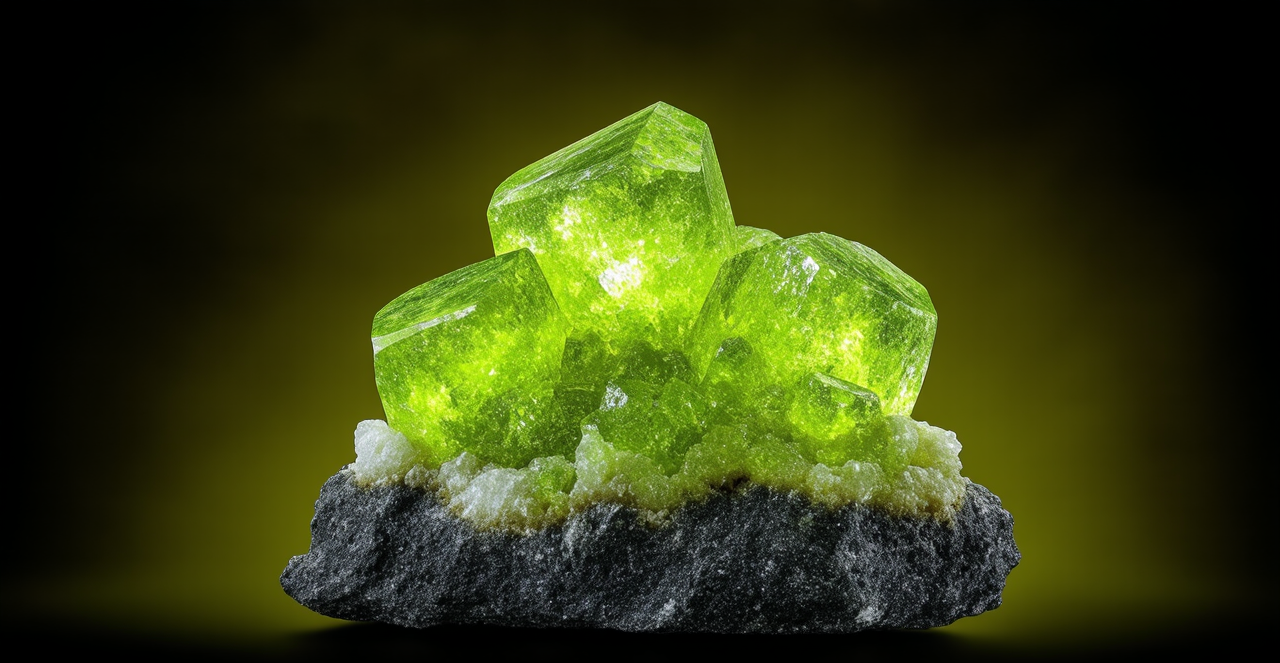
This origin adds a layer of wonder and significance to the photograph. The Peridot cluster is a messenger from the mantle, a tangible link to the dynamic processes occurring miles beneath our feet. The sharp, beautiful crystals formed in a tumultuous environment, yet emerged with such grace and colour. It’s a powerful metaphor for beauty arising from pressure and heat.
Symbolically, Peridot has long been associated with light, warmth, and protection. Ancient Egyptians called it the “gem of the sun,” believing it could ward off evil. Seeing its vivid green, particularly when emphasized by strategic lighting and contrast, reinforces this connection to light and vitality. Resting on its dark matrix, it can be seen as light emerging from darkness, vitality rooted in the deep earth. The sharp, defined crystals against the granular matrix can symbolize order emerging from chaos, structure within bulk.
In conclusion, this well-lit photograph of a large, apple-green Peridot crystal cluster on a dark, contrasting matrix is a meticulously executed portrait of geological beauty. The vibrant, luminous green of the Peridot, with its sharp prismatic faces and natural terminations, is the clear hero, dramatically emphasized by the dark, granular matrix upon which it rests. The small white feldspar crystals add textural and geological detail to the matrix, providing context for the Peridot’s likely deep-earth, volcanic origin. The strategic lighting sculpts the forms and enhances the colours, while the soft, dark gradient background isolates the specimen, allowing its inherent beauty and fascinating story to command full attention. This photograph is more than just a display of a mineral; it is a window into the powerful, patient processes that shape our planet, a celebration of the vivid life found even in the dark depths, and a stunning visual reminder of the Earth’s endless capacity to surprise and inspire with its radiant, fiery heart.
